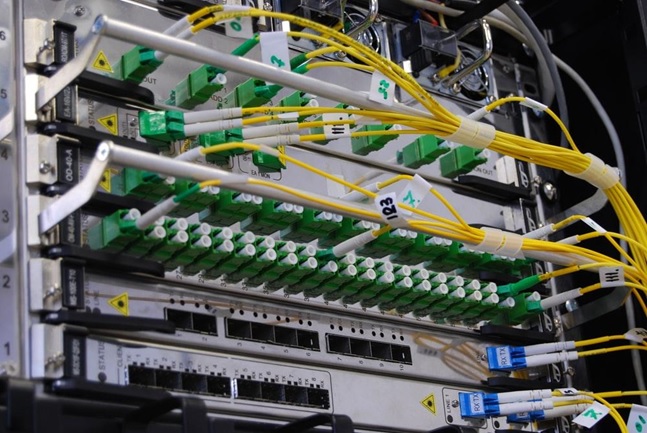

Discover Packet Filtering: What It Is, Why It Matters, and How It Shapes Your Network
Packet Filtering Definition
Think of packet filtering as a bouncer at a club, but for data on a network. Each packet that tries to slip through the firewall must first present its “ID” – usually its source, destination, and port identifiers. The firewall checks these credentials against a set of rules and decides whether to let the packet into the party or toss it out over the curb.
Why would you want Packet Filtering?
- Cost‑effective defense: No need for expensive hardware, just software‑based rules that sit on a router.
- Simple to configure: Drag‑and‑drop rule sets are enough for most small to medium businesses.
- Reduced attack surface: By cutting out unwanted traffic early, you keep vulnerable services from being exposed.
Control
The heart of packet filtering is control – controlling who gets in, who goes out, and what gets quarantined. Granular filtering lets administrators tweak which ports can be accessed, which IP ranges are allowed, and which protocols can have a say. It’s like customizing your wardrobe: you can choose what outfits (traffic types) you’ll wear (let through) and what you’ll keep for the closet (block).
Security
- Layered security*: Packet filtering sits on the first line of defense, working alongside IDS/IPS and encryption.
- Threat mitigation*: Cutting off unnecessary traffic makes it harder for attackers to sniff or spread malware.
- Compliance*: Many regulatory frameworks require traffic monitoring – packet filters help you meet those audit trails.
Surveillance
While it’s mostly blocking, packet filtering also lets you keep an eye on the flow. By logging which packets were denied or allowed, you can spot patterns that hint at intrusion attempts. Think of it as a security camera that not only stops intruders but records the whole story for later analysis.
Packet Filtering Definition
What’s the Deal with Packet Filtering?
Picture a bouncer at a nightclub who checks every guest’s ID before letting them in. Packet filtering works the same way for data traveling across the internet. It inspects the “ID” – the packet header – and decides whether the whole package can enter the network, be dropped, or diverted somewhere else.
In a Nutshell
- Read the header – The first few bytes of every packet are read.
- Decide its fate – Accept, reject, or redirect based on rules.
- Act instantaneously – All this happens in milliseconds.
Linux: The Master of the Filters
In Linux, packet filtering lives inside the kernel. It’s either built in or included as a module that can be loaded on demand. This tight integration means the filter can be as powerful or as minimalist as you need.
Why This Matters
- Provides a shield against unwanted traffic.
- Allows fine‑grained control over how data flows.
- Keeps your services running smoothly without snooping.
Cool Tricks You Can Pull
- Drop all traffic from a shady IP range.
- Redirect traffic from a specific port to a different server.
- Log every packet that tries to sneak past the rules.
Bottom Line
Even though the mechanisms can get pretty complex, the core principle remains the same: scan the header, then decide the package’s destiny. That’s all there is to packet filtering – straightforward, efficient, and essential for keeping networks safe and humming along.
Why would you want Packet Filtering?
Control
html
Become a Linux Network Gatekeeper
Imagine your Linux box as a bouncer at the entrance to your office—only the right folks get through. Every packet is like a visitor with a badge (the header) showing its destination. By flipping the right switches in your firewall, you decide who can walk in and who gets turned away.
- Whitelist the Goods: Allow only the traffic you trust—websites, email servers, or whatever your business needs.
- Blacklist the Not-So-Desirable: Block extraneous destinations, like shady sites or those that use your bandwidth for nothing.
- Inspect the Badge: Look at the IP address in the header; use it to decide the fate of each packet.
Quick Tip: The iptables Trick
Instead of standing there with a pen and paper, you can use:
- Accept:
iptables -A INPUT -p tcp --dport 80 -j ACCEPT– let in HTTP traffic. - Deny:
iptables -A OUTPUT -d 123.45.67.89 -j DROP– keep that rogue address out.
Don’t forget to save your rules so they survive a reboot. A few lines of configuration and you’ve turned your Linux box into the ultimate gatekeeper. No more random newcomers crashing your network!
Security
Keeping Your Linux Home Safe from the Wild West of the Internet
Imagine your Linux box as the sturdy front door of your digital house. You’re the homeowner, and the Internet is that bustling street outside, full of friendly folks and nasty troublemakers. You’ve got a solid door—iptables—that can decide who gets in. Let’s see how you can turn that door from a flimsy paper frame into a fortified bunker.
1⃣ Let the Outgoing World Be Yours
You’re perfectly fine letting all good stuff slip out of the network. When the Internet sends traffic back to you, it’s your choice to give it a green light. But beware of those sneaky “Death Ping” s—exploits that use ICMP to bring down machines with a single message.
- Block ICMP echo requests that come from outside unless you can prove they’re friendly.
- Keep an eye on any ping floods; just because everyone can ping your router does not mean your server should roll with it.
2⃣ Put Out the Telnet Invite
Even if every account has a strong password, let’s be honest: opening Telnet is like leaving the back door unlocked. Anyone could stroll in, see the room, and whisper. If you’re building a server, great. If you’re just scrolling through the Web, let’s close that back door.
- Reject
telnetpackets at the network level so no one can even ask for the door. - Switch to SSH if you must give remote access, and disable
telnetaltogether.
3⃣ Stay Sober to the Internet but Tricky
Remember, you’re a vigilant observer—you want to keep your machine looking at the outside without letting strangers hop in. That means rejecting any packet that tries to sprint one-way into your system.
- Drop inbound packets that look like they’re establishing a new connection.
- Let “you” communicate with the outside but keep the rest out.
Pro Tip: Use the “Go-Bouncer” Pattern
Think of iptables as a bouncer at a club: if the request doesn’t match a known, safe list, you give the door a firm “NO.”
Because the Internet is full of chaos, a good firewall looks like a calm front door: you can close on the bad guys, but the good ones still let you in and out without much fuss.
Surveillance
When Your Network Goes Rogue
Ever had a desk‑side appliance that decides it’s “on a roll” and starts spewing packets all over town? Computers that stumble into packet‑puke mode can turn a calm office into a minor net‑conflict.
Why the Whack‑Packages Matter
Normally, your router’s fire‑wall is the unsung hero that blocks outside traffic. But if it’s misconfigured, it can unknowingly be a traffic‑teller, blustering data to the internet like a spam‑spray at a party.
How to Spot the Poison
- Check for an excessive burst of outbound packets that weren’t prompted by user action.
- Look for remote connections that pop up out of nowhere—they’re the weird guests.
- Enable alert notifications on your filter so you know something’s off before the culprit leaves a digital claw mark.
What to Do Next
If your filter starts shouting, tighten those rules and re‑audit that machine. A quick check of the host’s local settings can often mend the rogue behavior.
In short, keep an eye on the anomalies. Either you’ll save your network or you’ll get a smug grin from the mastermind device. Either way, it’s a good reason to test your packet filter’s quirks!






![Prefer Hosting Raja For VPS Server Hosting Systems [2024] Prefer Hosting Raja For VPS Server Hosting Systems [2024]](https://www.computertechreviews.com/wp-content/uploads/2021/03/Why-Organisations-Should-Prefer-Hosting-Raja-For-VPS-Server-Hosting-Systems.jpg)
